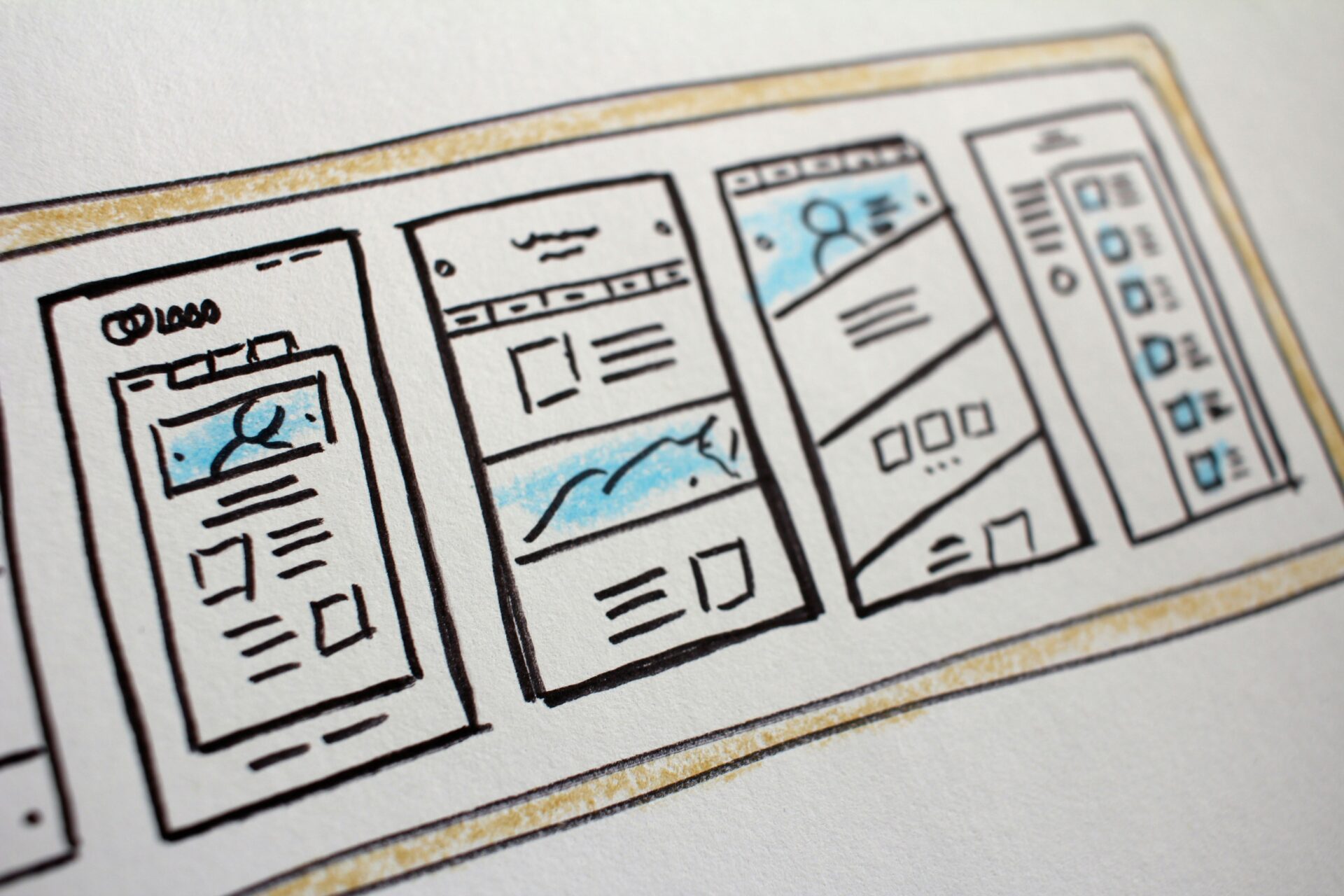
Transform Your Digital Footprint with a Professional Website Redesign for SEO
Website design is a critical factor in search engine optimization (SEO). When it comes to ranking higher on search engines, having a well-designed website is essential. A website that is visually appealing, user-friendly, and optimized for SEO can significantly impact its search engine rankings. Many businesses should consider doing a website redesign for SEO purposes.
One of the key reasons why website design matters for SEO is its correlation with user experience. Search engines like Google prioritize websites that provide a positive user experience. If a website is poorly designed, difficult to navigate, or slow to load, users are more likely to leave the site quickly. This high bounce rate signals to search engines that the website does not meet the needs of users, resulting in lower rankings.
A well-designed website, on the other hand, encourages users to stay longer, explore different pages, and engage with the content. This positive user experience sends positive signals to search engines, indicating that the website is valuable and relevant to users’ queries. As a result, search engines are more likely to rank the website higher in search results.
Key Takeaways
- Website design plays a crucial role in SEO success.
- Analyze your current website design to identify areas for improvement.
- SEO-friendly website design includes proper use of headings, meta tags, and structured data.
- Choose a color scheme and typography that is easy to read and visually appealing.
- Optimize navigation and user experience for better SEO performance.
Analyzing Your Current Website Design: Identifying Areas of Improvement
Before making any changes to your website design, it’s important to analyze your current design and identify areas of improvement. This analysis will help you understand what aspects of your website are working well and what needs to be changed.
Start by evaluating the overall layout and structure of your website. Is it easy to navigate? Are important pages easily accessible? Is the content organized in a logical manner? These are some questions you should ask yourself when analyzing your website design.
Next, assess the visual elements of your website such as color scheme, typography, and imagery. Do they align with your brand identity? Are they visually appealing? Do they enhance the user experience? Consider seeking feedback from others or conducting user testing to gain insights into how users perceive your website design.
If you’re unsure about how to analyze your website design or identify areas of improvement, it may be beneficial to seek professional help. Web design experts can provide valuable insights and recommendations based on their expertise and experience. They can conduct a thorough analysis of your website design and provide actionable recommendations for improvement.
Understanding the Basics of SEO-Friendly Website Design
To optimize your website design for SEO, it’s important to understand the basics of SEO-friendly website design. This involves using clean and organized code, ensuring mobile-friendliness, and optimizing page load speed.
Clean and organized code refers to the underlying structure of your website. Search engines prefer websites that have clean and well-structured code as it makes it easier for them to crawl and index the site. This means using proper HTML markup, avoiding excessive use of JavaScript, and optimizing CSS stylesheets.
Mobile-friendliness is another crucial aspect of SEO-friendly website design. With the increasing use of mobile devices for internet browsing, search engines prioritize websites that are optimized for mobile viewing. This includes having a responsive design that adapts to different screen sizes, using mobile-friendly navigation menus, and optimizing images and videos for mobile devices.
Page load speed is also a significant factor in SEO performance. Slow-loading websites not only frustrate users but also negatively impact search engine rankings. To improve page load speed, optimize image sizes, minify CSS and JavaScript files, enable browser caching, and choose a reliable hosting provider.
Choosing the Right Color Scheme and Typography for SEO
| Color Contrast Ratio | The difference in brightness between the foreground and background colors, which affects readability and accessibility. |
| Color Psychology | The impact of colors on human emotions and behavior, which can influence user engagement and conversion rates. |
| Font Size | The size of the text, which affects readability and user experience on different devices and screen sizes. |
| Font Style | The typeface and style of the text, which can convey different tones and messages to the audience. |
| Line Height | The vertical space between lines of text, which affects readability and visual hierarchy of the content. |
The color scheme and typography of your website can have a significant impact on its overall design and SEO performance. The right color scheme can evoke emotions, create a cohesive brand identity, and enhance user experience.
When choosing a color scheme for your website, consider your brand identity and target audience. Different colors evoke different emotions and have different cultural associations. For example, blue is often associated with trust and professionalism, while red can evoke excitement or urgency. Choose colors that align with your brand values and resonate with your target audience.
Typography is another important aspect of website design. The right typography can improve readability, enhance the visual appeal of your website, and contribute to a positive user experience. Choose fonts that are easy to read, legible on different devices, and consistent with your brand identity. Avoid using too many different fonts as it can make your website look cluttered and unprofessional.
Consistency is key when it comes to color scheme and typography. Use the same colors and fonts throughout your website to create a cohesive and visually appealing design. Consistency not only improves the overall aesthetics of your website but also helps users navigate and understand your content more easily.
Optimizing Your Website’s Navigation and User Experience for SEO
Website navigation and user experience are crucial factors in SEO performance. A well-designed navigation system makes it easier for users to find the information they are looking for, encourages them to explore different pages, and reduces bounce rates.
To optimize your website’s navigation, start by organizing your content in a logical manner. Use clear and descriptive menu labels that accurately represent the content of each page. Avoid using vague or generic labels that may confuse users.
Consider implementing a hierarchical structure for your website’s navigation. This involves organizing your content into categories and subcategories, making it easier for users to navigate through different sections of your website. A hierarchical structure also helps search engines understand the relationship between different pages on your site.
In addition to navigation, user experience is another important aspect of website design for SEO. User experience refers to how users interact with your website and how they perceive its usability. A positive user experience encourages users to stay longer on your site, engage with your content, and share it with others.
To optimize user experience, focus on providing high-quality content that is relevant to users’ queries. Make sure your content is easy to read, well-organized, and visually appealing. Use headings, subheadings, and bullet points to break up large blocks of text and make it easier for users to scan and understand your content.
Incorporating Responsive Design for Improved Mobile SEO

With the increasing use of mobile devices for internet browsing, having a responsive design is crucial for SEO performance. Responsive design refers to a design approach that allows a website to adapt to different screen sizes and devices.
Search engines prioritize websites that are mobile-friendly as they provide a better user experience for mobile users. A responsive design ensures that your website looks and functions well on different devices, including smartphones and tablets.
To incorporate responsive design into your website, start by using a responsive website template or theme. These templates are designed to automatically adjust the layout and content of your website based on the screen size of the device being used.
Next, test your website on different devices to ensure that it looks and functions as intended. Pay attention to elements such as navigation menus, images, and forms to ensure they are easily accessible and usable on mobile devices.
Finally, optimize your images and videos for mobile viewing. Large image files can slow down the loading speed of your website on mobile devices. Use image compression techniques to reduce file sizes without compromising image quality. Similarly, optimize videos by using formats that are compatible with mobile devices and compressing them for faster loading times.
Utilizing SEO-Friendly Images and Videos on Your Website
Images and videos play a crucial role in website design and can have a significant impact on SEO performance. Optimizing images and videos for SEO involves using high-quality visuals, relevant alt tags, and descriptive file names.
When it comes to images, choose high-quality visuals that enhance the overall design of your website. Avoid using low-resolution or pixelated images as they can negatively impact user experience. Use relevant alt tags to describe the content of each image. Alt tags not only improve accessibility for visually impaired users but also provide search engines with valuable information about the image.
Similarly, when using videos on your website, choose high-quality videos that are relevant to your content. Optimize videos by using descriptive file names and captions. This helps search engines understand the content of the video and improves its visibility in search results.
It’s also important to consider the file size of images and videos. Large file sizes can slow down the loading speed of your website, negatively impacting user experience and search engine rankings. Use image compression techniques to reduce file sizes without compromising image quality. Similarly, compress videos to reduce their file size and improve loading times.
Improving Website Loading Speed for Better SEO Performance
Website loading speed is a critical factor in SEO performance. Slow-loading websites not only frustrate users but also result in higher bounce rates and lower search engine rankings.
To improve website loading speed, start by optimizing image sizes. Large image files can significantly slow down the loading time of your website. Use image compression techniques to reduce file sizes without compromising image quality. Additionally, consider using lazy loading techniques, which load images only when they are visible on the user’s screen.
Minify CSS and JavaScript files to reduce their file sizes. Remove unnecessary spaces, comments, and line breaks from your code to make it more compact and efficient. This helps reduce the amount of data that needs to be transferred from the server to the user’s browser, resulting in faster loading times.
Enabling browser caching is another effective way to improve website loading speed. Browser caching allows users’ browsers to store certain elements of your website, such as images and CSS files, so they don’t have to be downloaded again on subsequent visits. This reduces the amount of data that needs to be transferred, resulting in faster loading times.
Finally, choose a reliable hosting provider that offers fast server response times. The performance of your hosting provider can have a significant impact on the loading speed of your website. Look for hosting providers that offer solid-state drives (SSDs), content delivery networks (CDNs), and other performance optimization features.
Incorporating Social Media Integration for SEO Benefits
Social media integration is another important aspect of website design for SEO. Integrating social media into your website can help improve its visibility, increase traffic, and enhance user engagement.
When it comes to social media integration, start by adding social sharing buttons to your website. These buttons allow users to easily share your content on their social media profiles, increasing its reach and visibility. Make sure the social sharing buttons are prominently displayed and easily accessible on each page of your website.
Consider adding social media follow buttons to your website as well. These buttons allow users to easily follow your social media profiles, increasing your number of followers and expanding your online presence. Place the follow buttons in a visible location, such as the header or footer of your website.
In addition to social sharing and follow buttons, consider embedding social media feeds on your website. This allows users to see your latest social media posts directly on your website, encouraging them to engage with your content and follow you on social media.
Finally, make it easy for users to share your content by including social sharing options within your blog posts or articles. This allows users to share specific pieces of content that they find valuable or interesting, increasing its visibility and driving more traffic to your website.
Measuring the Success of Your Revamped Website Design: Analyzing SEO Metrics
After revamping your website design, it’s important to measure its success by analyzing SEO metrics. This involves monitoring key performance indicators (KPIs) such as organic search traffic, bounce rate, average session duration, and conversion rate.
Organic search traffic refers to the number of visitors that come to your website through search engine results pages (SERPs). An increase in organic search traffic indicates that your website design is attracting more visitors from search engines.
Bounce rate refers to the percentage of visitors who leave your website after viewing only one page. A high bounce rate may indicate that your website design is not engaging or relevant to users’ queries. Analyze the pages with high bounce rates and identify areas for improvement.
Average session duration measures the amount of time users spend on your website. A longer average session duration indicates that users are engaging with your content and finding value in it. Analyze the pages with high average session durations and identify what elements are contributing to their success.
Conversion rate measures the percentage of visitors who complete a desired action, such as making a purchase or filling out a contact form. A higher conversion rate indicates that your website design is effectively guiding users towards the desired action. Analyze the pages with high conversion rates and identify what design elements are contributing to their success.
In addition to these KPIs, monitor other SEO metrics such as keyword rankings, backlink profile, and crawl errors. These metrics provide insights into how well your website is performing in search engine results and can help you identify areas for improvement.
Website design plays a crucial role in SEO performance. A well-designed website that prioritizes user experience, incorporates SEO-friendly elements, and follows best practices can significantly improve search engine rankings.
By analyzing your current website design, identifying areas of improvement, and implementing SEO-friendly design elements, you can optimize your website for better SEO performance. Consider seeking professional help if necessary to ensure that your website design meets the highest standards.
Remember to continuously monitor and analyze SEO metrics to measure the success of your revamped website design. SEO is an ongoing process, and it’s important to make continuous improvements based on data-driven insights.
By following the tips and guidelines outlined in this article, you can improve your website design and ultimately rank higher on search engines.
If you’re considering a website redesign for SEO purposes, you may also be interested in learning about the importance of user experience in web design. User experience plays a crucial role in attracting and retaining visitors to your website, which can ultimately impact your search engine rankings. To understand how consumer perception influences buying decisions and how you can optimize your website’s user experience, check out this informative article: The Importance of User Experience in Web Design.
FAQs
Website redesign for SEO is the process of updating and improving a website’s design and structure to make it more search engine friendly. The goal is to improve the website’s visibility and ranking on search engine results pages (SERPs).
Website redesign for SEO is important because it helps to improve a website’s visibility and ranking on search engine results pages (SERPs). This can lead to increased traffic, more leads, and ultimately more revenue for businesses.
Some key elements of website redesign for SEO include optimizing website structure and navigation, improving website speed and performance, creating high-quality content, optimizing images and videos, and implementing on-page and off-page SEO strategies.
The time it takes to complete a website redesign for SEO can vary depending on the size and complexity of the website, as well as the specific goals and objectives of the redesign. Generally, website redesigns can take anywhere from a few weeks to several months to complete.
Some common mistakes to avoid during website redesign for SEO include not properly redirecting old URLs to new ones, not optimizing images and videos, not properly optimizing website structure and navigation, and not creating high-quality content that is optimized for search engines.
The success of a website redesign for SEO can be measured using a variety of metrics, including website traffic, search engine rankings, conversion rates, and revenue. It is important to set specific goals and objectives for the redesign and track progress towards those goals over time.



